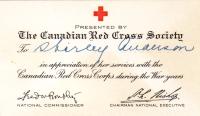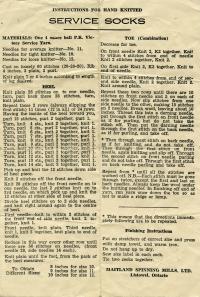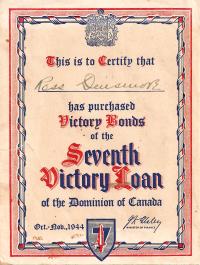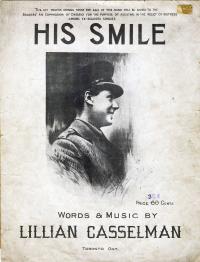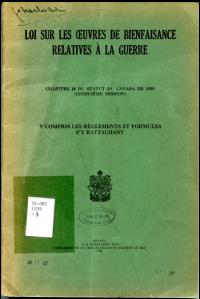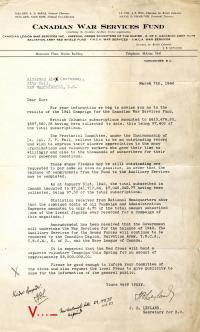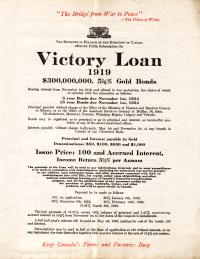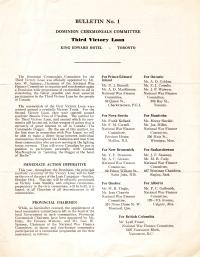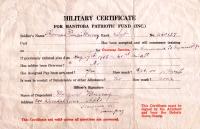Volunteering
Introductory Essay
Thanks from the Canadian Red Cross
Tens of thousands of Canadian women gave freely of their time and energy during the world wars, expecting nothing in return and often getting nothing more than a card of thanks and acknowledgment.
Knitting socks for soldiers
One only has to read their letters and diaries to see how important socks were to soldiers, and it was just as important to Canadians to be able to supply them. The fact that this knitting instruction sheet, preserved by Charlotte Halls of Winnipeg, Manitoba, is so well worn suggests that it was used frequently, and perhaps passed through many hands during the Second World War.
Fund-raising tag days
During the First World War, paper tags were sold to raise money for various causes; in wearing them, donors could publicly demonstrate their support of the war effort.
A student supports the Victory Loan
Ontario high school student Ross Densmore was one of tens of thousands of subscribers to the 1944 Victory Loan, the seventh such campaign in Canada during the Second World War.
Raising funds for ex-soldiers' families
This song, written in honour of the Prince of Wales, who visited Canada immediately after the First World War, raised money for the Soldiers' Aid Commission of Ontario, which assisted the families of ex-soldiers in financial distress.
Law on Charities Relating to the War
This booklet outlines various components of the law governing charitable organizations during wartime.
Canadian War Services Fund, 1941 campaign
This letter reveals the impressive totals raised in the campaign to aid the Canadian Legion War Services, the IODE, the Knights of Columbus Canadian Army Huts, the Salvation Army Red Shield Fund, and the YMCA and YWCA War Services: over $613,000 in British Columbia, and over $7.2 million (over $131 million in 2024 values) in Canada as a whole.
$300 million for the war effort
The First World War was over when this Victory Loan campaign was launched, but there were still bills to be paid.
A financial dagger pointed at the heart of Berlin
Canada's third Victory Loan campaign - symbolized by a Commando dagger - aimed to raise $750 million; ultimately, $991 million was subscribed, thanks to some of the innovative measures suggested in this brochure.
Taking care of soldiers' families
The Canadian Patriotic Fund was established to provide for the families of men in uniform who had been left destitute by the enlistment of the breadwinner. Thomas Murray, a native of Newfoundland, had enlisted in the 212th Battalion in August 1915, and later served with the 61st Battalion.

